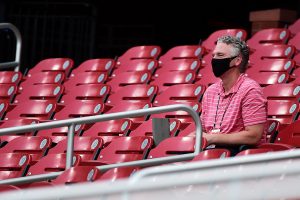The Mariners missed qualifying for the postseason by just one game — a heartbreaking outcome for a club that held a commanding 10-game lead in the American League West back in June. Seattle’s offense floundered all year on the heels of a 2023-24 offseason punctuated by payroll restrictions and a series of salary-driven trades to help balance the lineup while adhering to a budget that was tighter than most anticipated.
Ryan Divish and Adam Jude of the Seattle Times have some relatively good news for frustrated M’s fans on that front, reporting that ownership expects payroll to increase in 2025. That’s a breath of fresh air after it became clear almost immediately last offseason that payroll had minimal room to grow. On the other hand, the Times duo adds that a major free agent splash is not expected, thus suggesting that any uptick in payroll could be fairly modest in nature.
Seattle’s roster is overwhelmingly cost controlled, as the bulk of its core is either signed long-term or in the early stages of arbitration. As is the case with all teams fitting that description, there are some natural payroll increases that should be baked into the offseason.
Julio Rodriguez will see his salary jump from $10MM to $18MM under the terms of his long-term extension, for example. Victor Robles only cost the Mariners the prorated league minimum this year after being released by the Nationals, but he’ll earn $3.5MM next year on the two-year extension he signed in August. Dylan Moore, Andres Munoz and Mitch Garver will also see small salary increases on their guaranteed multi-year deals, all of which are slightly backloaded. It’s not all increases, however. Mitch Haniger’s deal is frontloaded, and he’ll actually see his salary drop from this year’s $20MM mark to the $15.5MM level on a player option he’s sure to exercise.
The bigger area for increase lies within the Mariners’ arbitration class. First-time candidates include Cal Raleigh and George Kirby, both of whom should command significant raises and could go from costing the club a combined $1.5MM to somewhere in the combined $10MM range. Randy Arozarena ($8.1MM in 2024), Logan Gilbert ($4.05MM) and Josh Rojas ($3.1MM) are in line for the most notable raises among the rest of the group, though relievers like Trent Thornton ($1.2MM in ’24), Austin Voth ($1.25MM), JT Chargois ($1.285MM), Gabe Speier (pre-arb) and Tayler Saucedo (pre-arb) could all get boosts as well. Luis Urias is all but a surefire non-tender candidate, and injured utilityman Sam Haggerty isn’t necessarily guaranteed to be tendered.
Assuming the Mariners decline Jorge Polanco’s $12MM option after a disappointing 2024 season — Divish and Jude unsurprisingly write that they’re likely to do so — and tender contracts to Raleigh, Kirby, Gilbert, Rojas, Thornton, and Saucedo, they’ll land somewhere in the $140MM payroll range before making a single move this offseason (including a slate of pre-arbitration players to round out the roster). This year’s payroll was finished just shy of $145MM, per RosterResource.
An increased payroll, then, doesn’t necessarily signify the looming addition of any large salaries to be acquired via free agency or trade. That said, word of an increasing payroll also does lend some insight into the direction the team will take. For instance, we’ve already seen the Cardinals plainly state that next year’s payroll will decrease. It became clear almost immediately in the Twins’ offseason last year that payroll would decline from 2023 to 2024. We’re five years removed (to the day) from Rockies ownership kicking off the winter by saying they lacked flexibility for additions of note. With Jerry Dipoto returning as president of baseball operations, there’s always a “never say never” caveat attached to virtually any player’s trade candidacy, as he’s among the game’s most active executives on that market. Still, there’s no reason to anticipate sweeping changes among the team’s excellent young core.
Rather, the focus once again seems likely to be on reinventing an offense that has been continually stagnant despite repeated personnel changes. The M’s would no doubt welcome the opportunity to get out from some or all of their commitments to Haniger and Garver, but that’ll be no small feat. They’ll again be looking to upgrade at third and/or second base after last year’s pickups of Polanco and Urias didn’t yield the intended results. First base is an open question, though the hope is that young Tyler Locklear can solidify the position.
The outfield/designated hitter mix — Arozarena, Rodriguez, Robles and Luke Raley — is largely set, and the Mariners don’t figure to be major players in the starting pitching market. Gilbert and Kirby will be rejoined by Luis Castillo, Bryce Miller and Bryan Woo, comprising a brilliant rotation. Other clubs will surely try to pry some of those young, cost-controlled arms away from the Mariners while dangling promising young hitters in return. However, Dipoto and GM Justin Hollander opted not to deal from that rotation stock last year and would surely be reluctant to do so this coming offseason, given the near-unmatched blend of excellent results and affordable price tags they have throughout the starting staff.
Divish and Jude write that Dipoto spoke of ways to “address our holes that maybe don’t include [trading away] the players that are here” — a potential nod to dealing from a deep farm rather than subtracting from the big league roster. Prospects like Locklear, catcher/outfielder Harry Ford, right-hander Logan Evans, outfielders Jonny Farmelo and Lazaro Montes, and infielders Colt Emerson, Cole Young and Felnin Celesten have all garnered fanfare among the game’s top-100 prospects since midseason. More broadly, the Mariners rank 11th or better on the midseason farm system rankings from ESPN’s Kiley McDaniel (11th), MLB.com (ninth) and Baseball America (seventh). Dipoto and Hollander will have no shortage of coveted young talent to peddle on the market if the goal is to augment the lineup without heavily subtracting from the current big league roster.
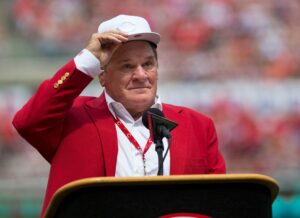
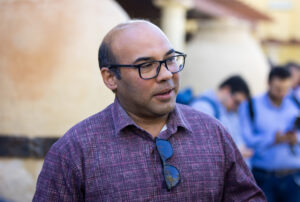
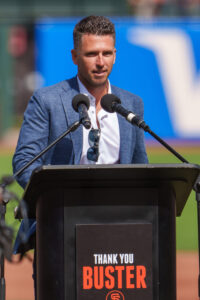
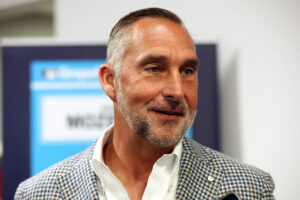
 Bloom will be entrusted with making those changes, though he won’t be given carte blanche right away. As detailed by Mozeliak up top, it seems he will handle the basic running of the club for the next year as Bloom focuses on things under the hood. That presumably will involve tackling things away from the majors, from the minor league facilities, coaches, scouting departments and things of that nature. After a year of making changes in those capacities, he will eventually take over the baseball decisions in a more complete capacity.
Bloom will be entrusted with making those changes, though he won’t be given carte blanche right away. As detailed by Mozeliak up top, it seems he will handle the basic running of the club for the next year as Bloom focuses on things under the hood. That presumably will involve tackling things away from the majors, from the minor league facilities, coaches, scouting departments and things of that nature. After a year of making changes in those capacities, he will eventually take over the baseball decisions in a more complete capacity.